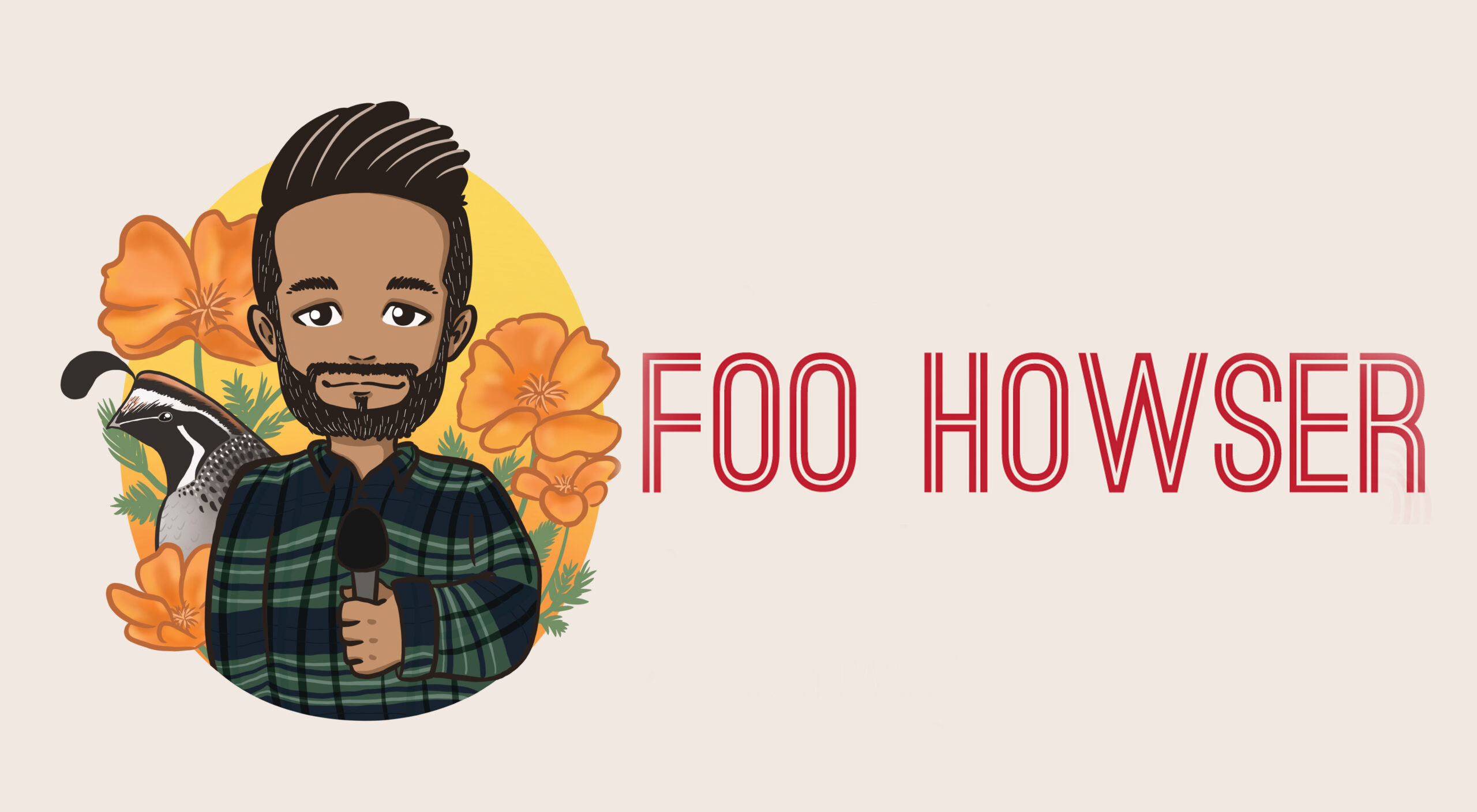A few weeks ago I learned about a Huell Howser Fan Club that is run by Shawniece Swain, one of my favorite follows on Instagram. She’s been putting together an annual meet-up for a few years in Glendora, where fellow “Huell-igans” get together to explore The Rubel Castle and The Donut Man, two places in Glendora that Huell highlighted during his career.
I jumped at the chance to meet Shawniece and hang out with some fellow Huell Howser fans and spend a day remembering him.

Our day started by taking a private tour of the Rubel Castle led by docent Richard Macy, who not only gave Huell Howser a tour on his 2nd visit, but was also good friends with Michael Rubel, the builder of the castle.
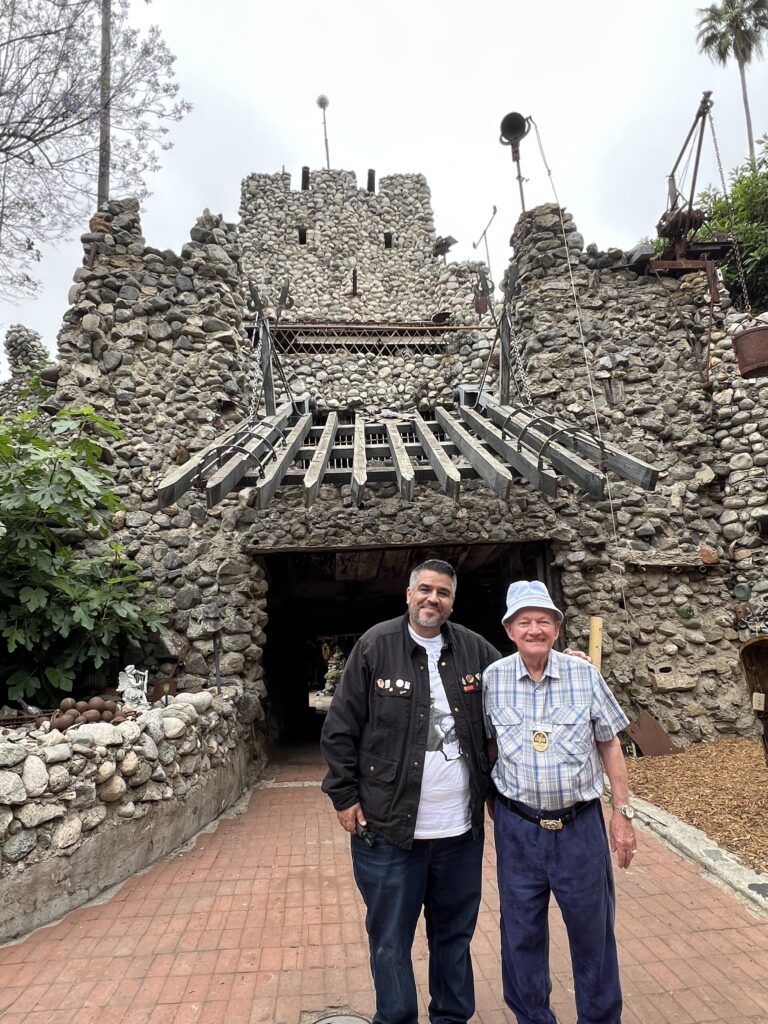
Michael Rubel was born in Glendora in 1940, his father was an Episcopal minister and comedy writer, and his mother was a Broadway actress and Follies dancer.
Michael’s dad passed away when he was 6 years old and his mother went into real estate to provide for Michael and his 2 older siblings, so he was often left to entertain himself. He made friends not only with the local kids, but also with some of the older men in town.

Photo Credit: Glendora Historical Society
One of those men was Arthur K. Bourne, heir to the Singer sewing machine fortune, who owned the 1,400-acre orange grove where Michael and his friends would play in.
Whenever a tree in the grove would die, it would be cut down, but before it could be replaced with a new one, Michael and his friends would gather materials from the city scrapyard and built forts, he built his first one when he was 8 years old and was building 4-story towers by the time he was 10.
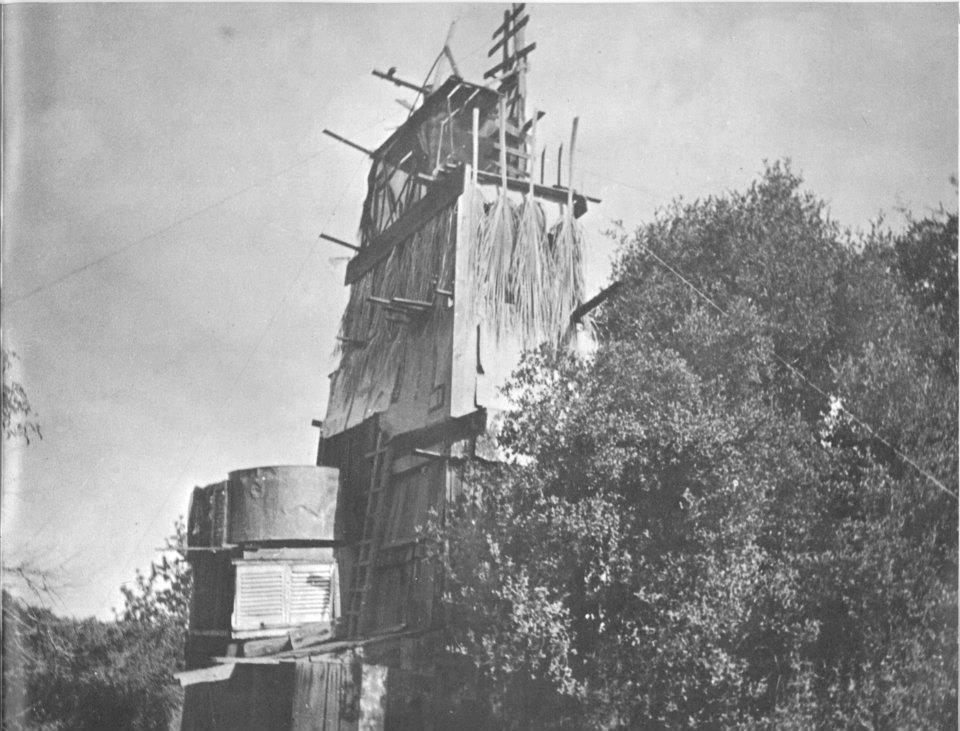
The orange grove held such a special place in Michael’s heart that when he was a teenager, he basically told Arthur Bourne, “I love this place, you should give it to me.”
Bourne subdivided and sold most of the land but he donated 2.5 acres to the Glendora’s Episcopal Church with the understanding that Michael would be given the opportunity purchase it when he turned 20 years old.
Michael had embarked on a trip around the world when he was 17, but returned home to Glendora and acquired the property with a $200 down payment when he was 19, which included a 2-million-gallon reservoir and packing house.
Michael and his mom moved into the packing house, which his mom called “The Tin Palace,” and she was soon throwing parties and entertaining guests that included lots of Hollywood stars like Bob Hope, Jack Benny, and Alfred Hitchcock.

Michael slept in one of the giant citrus refrigerators that he’d converted to bedrooms, but the insulation wasn’t enough to drown out the sound from his mom’s parties so in 1968 he built himself a small getaway house in the middle of the old reservoir out of cement and champagne bottles.
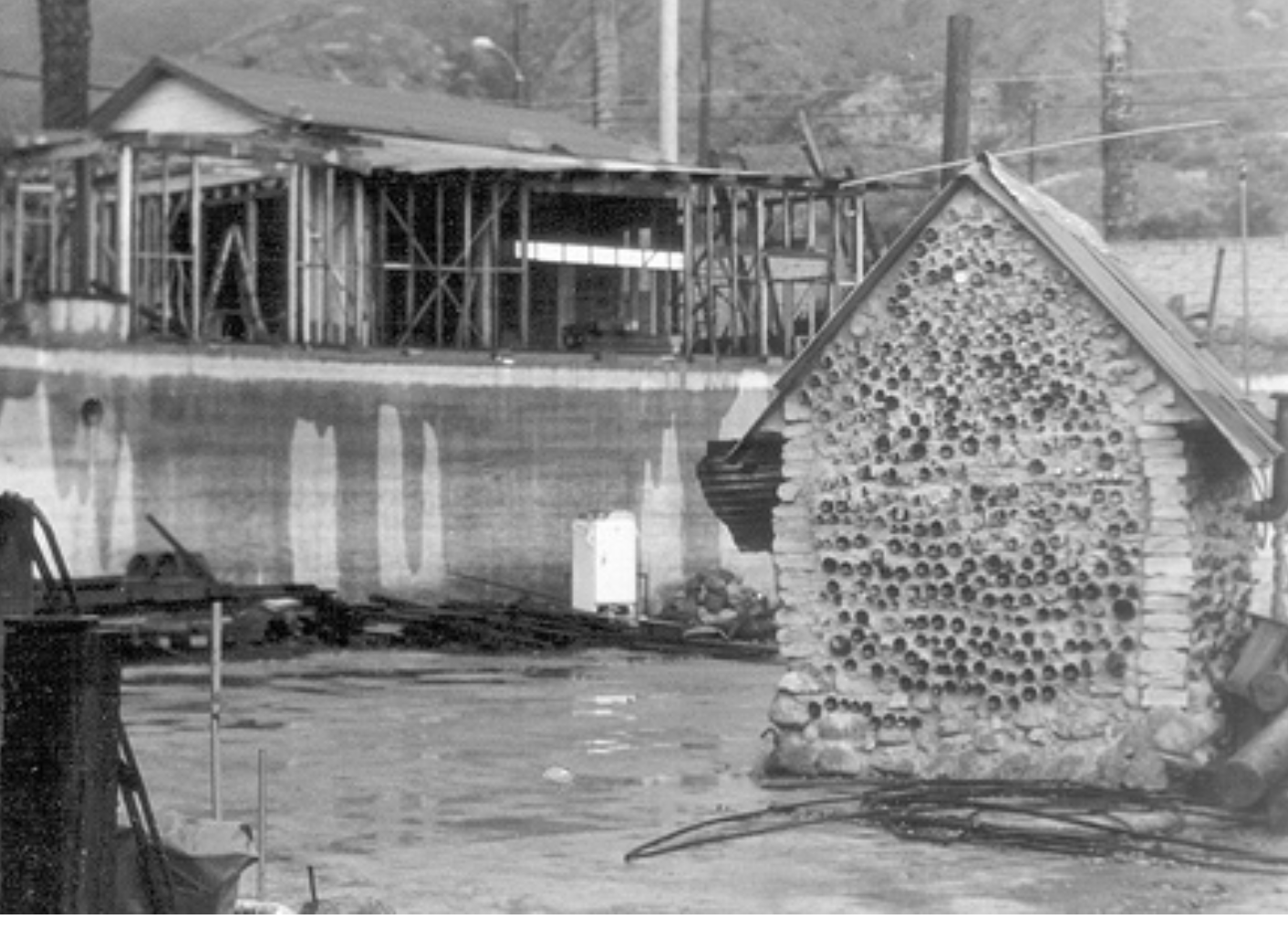
This launched the building spree that would span 2 decades and culminated in the 22,000 square foot castle complex we now know as the Rubel Castle.
During his trip around the world, Michael had become a clerk for a Dutch sea captain, who would later leave him a fortune which allowed him to build his dream.
Hundreds of Michael’s friends would help him in build the ultimate fort—they’d come and help with the construction on weekends, they’d salvage water tanks from nearby farms that Michael would weld together and turned into the towers for his castle. They also used local river rocks, salvaged wood, metal, bottles, and other junk as construction material. You can see things like motorcycles and sand-filled rubber gloves embedded in the walls.

Photo Credit: Glendora Historical Society
Michael had intended for the castle to be a never-ending project that would outlive him, but when Michael had his back fused in 1985, all construction stopped, and the castle was deemed finished because he was in too much pain to continue building.
In 2005 Michael willed his castle to the Glendora Historical Society before passing away in 2007. Since then, the Society has worked to make the castle available via guided tours as well as restoring and maintaining the grounds and various buildings on the property.
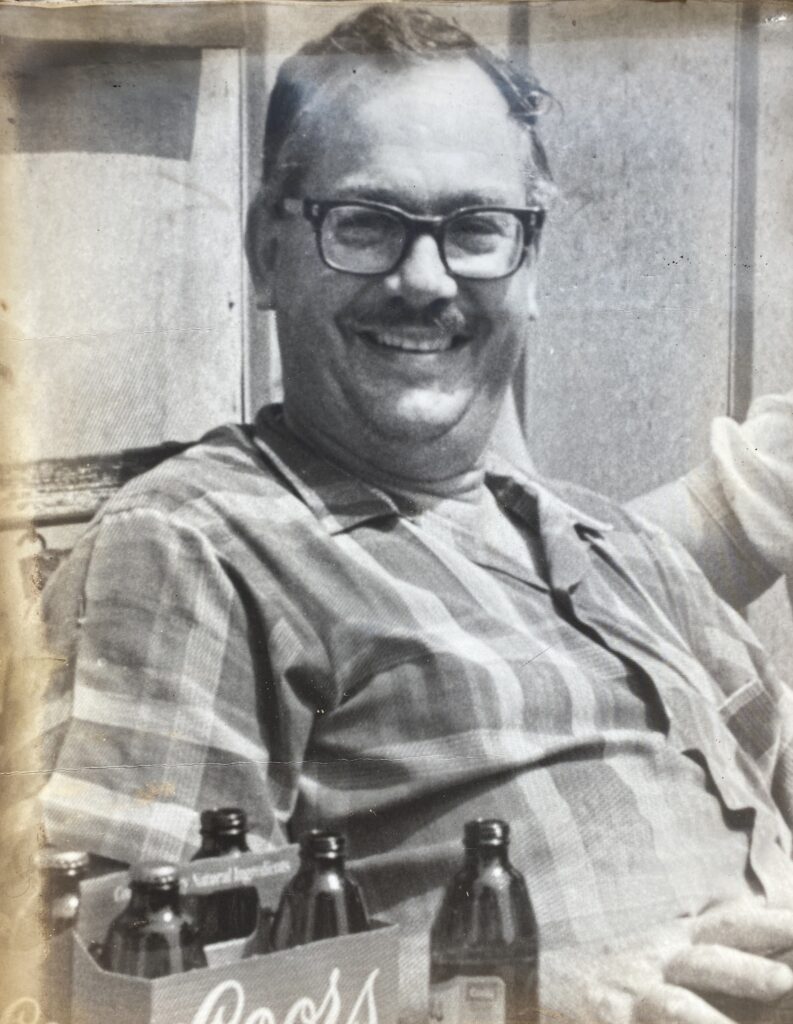
Photo Credit: Glendora Historical Society.
The Rubel Castle is a testament to Michael’s tenacity and creativity and we’re lucky that The Glendora Historical Society is helping to preserve it and make it available for all of us to visit.
The 2nd and last stop of our was The Donut Man. Home of the famous strawberry donut and Huell’s favorite, the tiger tail.
Our group got to meet and chat with Jim Nakano, The Donut Man, and hear him tell us the history of the shop and the secret behind his success.
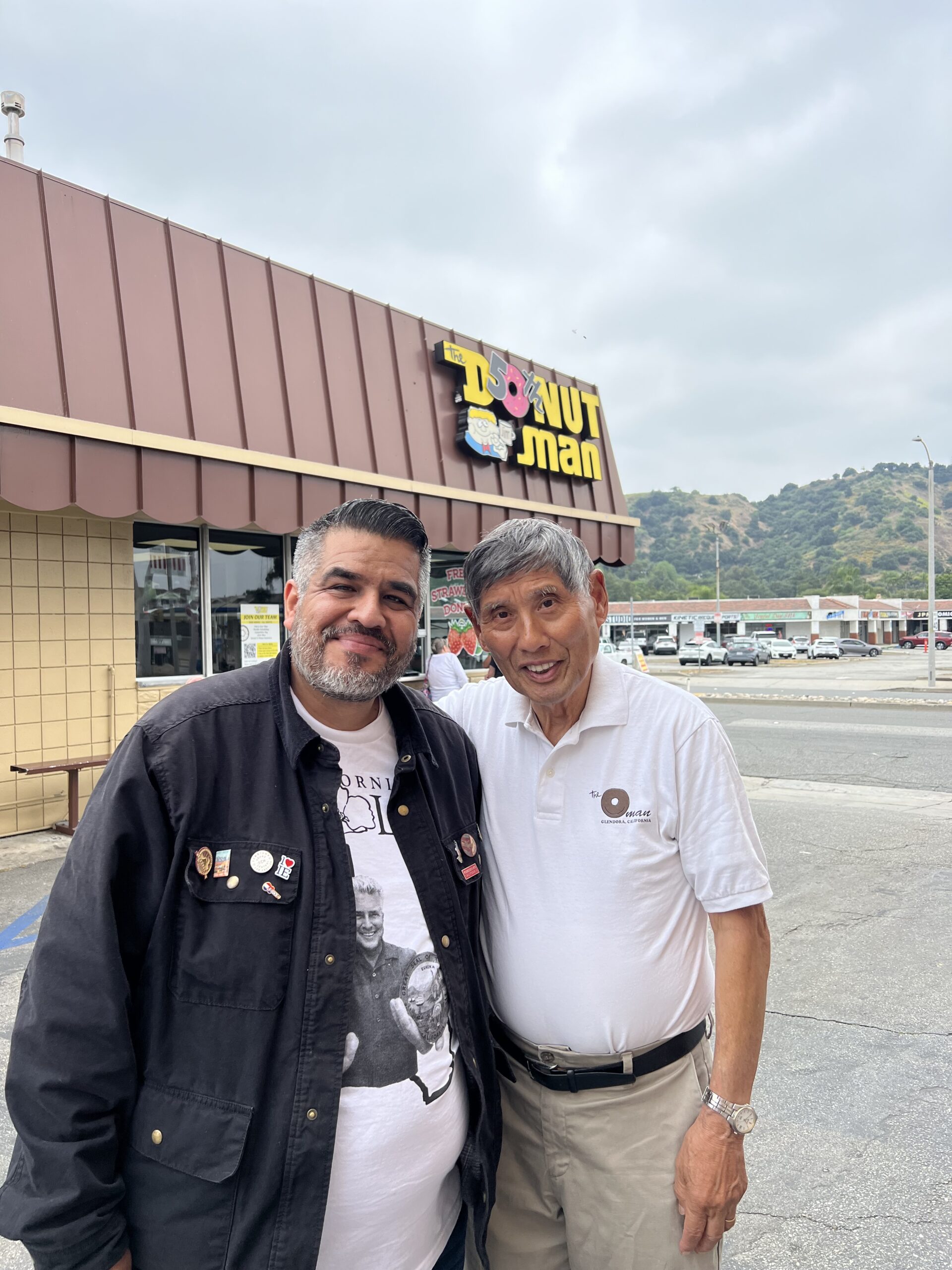
In 1971 Jim decided that he needed to change occupations, he was a department manager at J.C. Penny’s but had given himself a timeline to reach certain benchmarks in his career and when he asked his district manager if he was on track to meet his goals, he was told no and he left the company.
Jim didn’t know what he was going to do, but he found out that the most profitable businesses at the time sold Mexican food, Chinese food, pizza, or donuts.
Jim and his wife Miyoko lived in Ventura at the time and frequented a local donut shop called “Foster’s Donuts.” His wife told him, “I like hot donuts” and he decided to get into the donut business. It wouldn’t be the first time her decision would shape their business for the better.
Jim approached Warren Foster who told him he was about to start franchising, so Jim invested and learned to bake and the basics of running a shop.
Warren let him know that he was getting ready to open stores in Burbank, Pasadena, and Glendora—they went out to all the locations and Miyoko said, “I like Glendora.” Jim thought it was the worst place to open a store, given that there were only 2 ways into the city and the freeway just being built at the time, but he went with his wife’s intuition and they opened their Foster’s Donuts location on May 23, 1972.
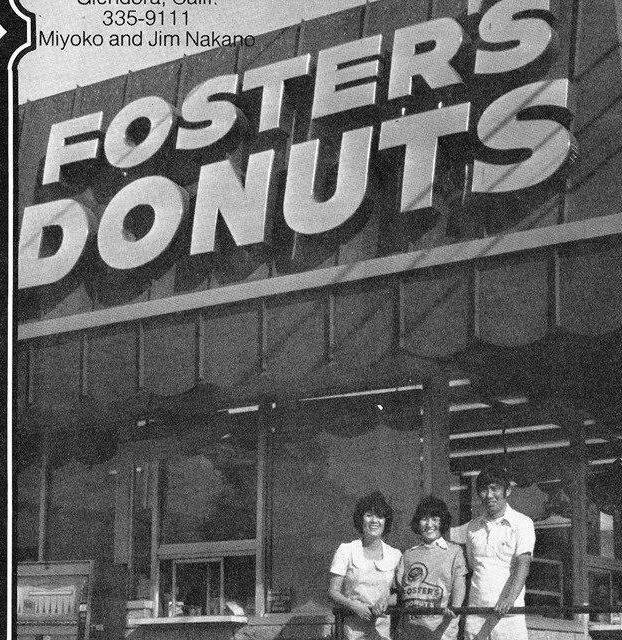
Photo Credit: The Donut Man
Despite there already being 5 donut shops in Glendora, their shop quickly spread by word of mouth from the teenagers and students at Azusa Pacific University that loved their donuts. Even though Jim had learned the basics, he was always trying to learn from other bakeries and restaurants, who gladly gave him advice.
He even got advice from Richard Snyder of In-N-Out who lived nearby and would often stop by the shop. From him, Jim learned to keep his parking lot clean and his windows spotless because that’s what customers always noticed.
In 1974 one of the local strawberry growers stopped in to pick up some donuts for his crew and told Jim, “You gotta make a strawberry donut, we got tons of strawberries and no market. Just make it and I’ll supply you.”
Jim went to a friend who was a manager at Marie Calendar’s and asked him to help him make a strawberry donut. The friend helped Jim develop the formula for a glaze that would compliment the strawberries and they were an instant hit and the beginning of what we now call designer donuts.
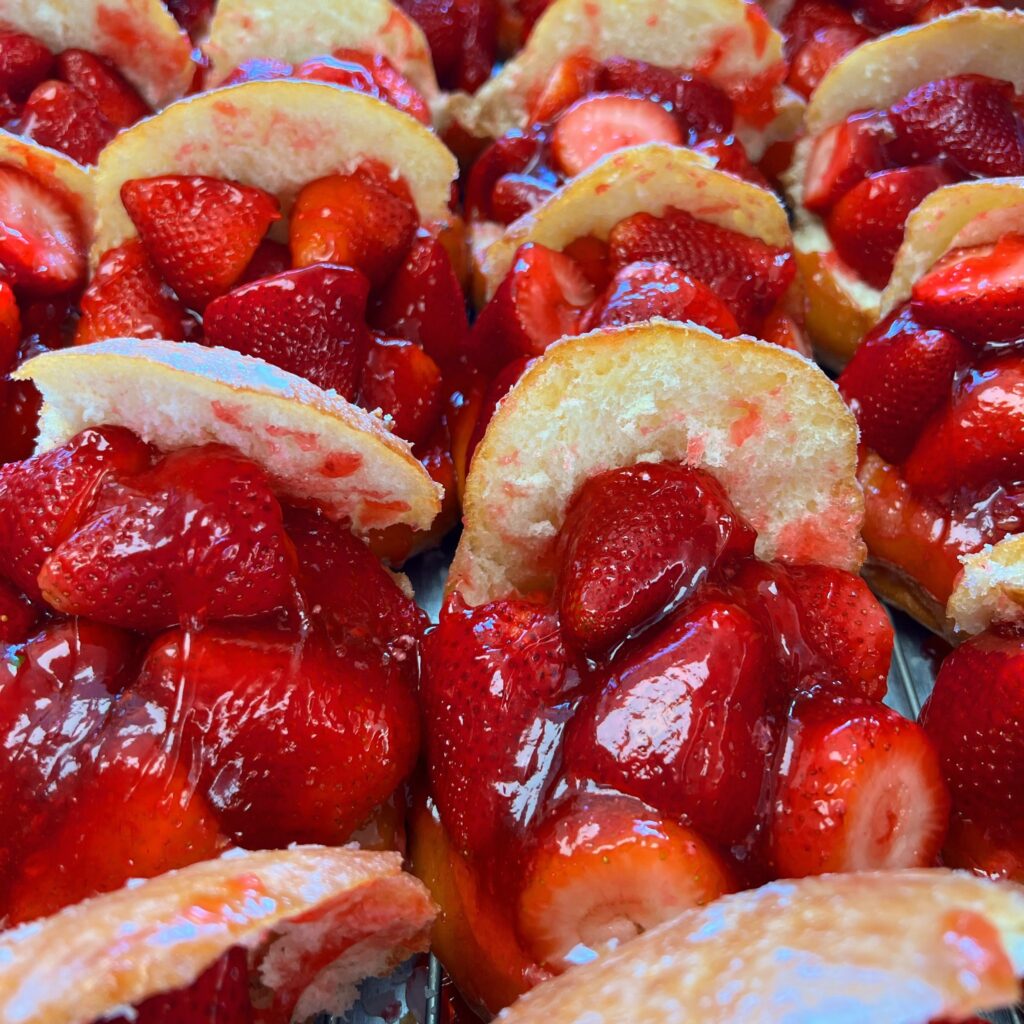
Jim’s desire to make the best donuts possible let to disagreements with Foster’s, they had certain rules about what supplies the franchisees could use, but Jim didn’t want to use instant yeast, he preferred live yeast. He wanted to use real cinnamon and not imitation, so in 1984 Jim bought himself out of the franchise agreement and spent 2 months trying to come up with a name for his shop, until one day when he was at a restaurant with friends and a little girl came up to him and said “Hi Donut Man!” and instantly he knew that would be the name of the shop.
The Donut Man was well known to locals, but it’s fame spread after Jonathan Gold wrote a glowing review about the strawberry donut, but it really took off after Huell Howser did a feature on the shop. Jim says that a month and a half after the show aired, they were only making 2 types of donuts, the strawberry and Huell’s favorite, the tiger tail, the donuts would never make it to the display case, they’d go from the glazer straight into the donut boxes.
Despite all their success, even opening a second location in the historic Grand Central Market, the shop still adheres to Jim’s commitment to using the best ingredients and baking donuts fresh around the clock to give their customers the best quality donut possible.

One bite of their freshly made donuts and it’s easy to see why The Donut Man has been around for more than 50 years and I hope it’s around for 50 more years.
References:
“Tour of Rubel Castle” led by Richard Macy, June 8, 2024.
“One Man’s Dream” by Richard Macy.
“National Register of Historic Places Registration Form: Rubel Castle Historic District.”
Rubel Historic Castle District | L.A. Conservancy
“Trash was Turned into a Treasure at Rubelia Castle” by Cecilia Rasmussen, The L.A. Times. Dec. 30, 2007.
“Q&A with Jim Nakano, The Donut Man” on June 8, 2024.
“For 45 Years, Southern California’s ‘Donut Man” has Drawn Crowds on Route 66” by Monica Luhar, NBC News. May 9, 2017.
“Fresh Talk from the Strawberry Donut Man” by David Allen, The Los Angeles Daily News. April 17, 2010.

